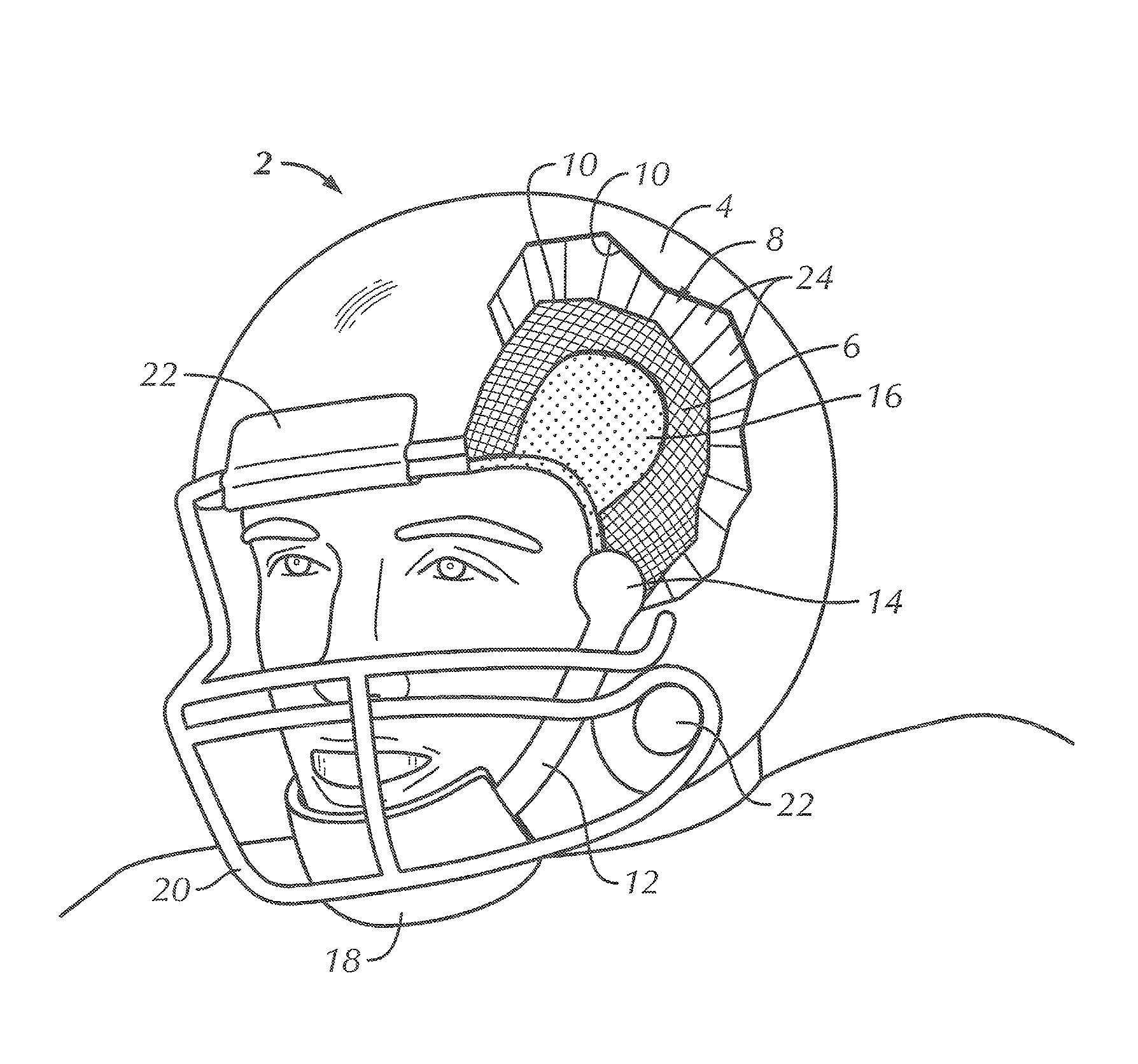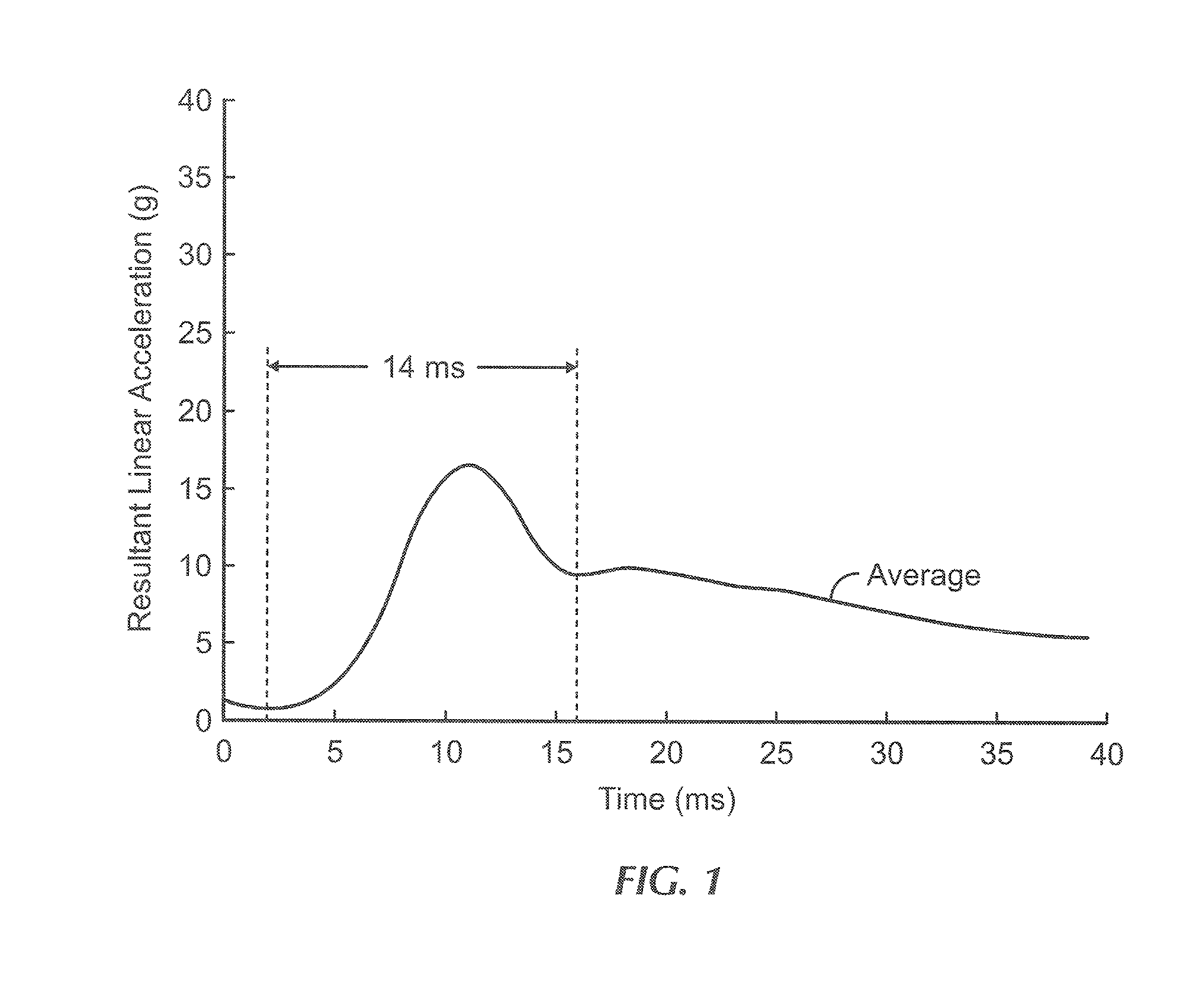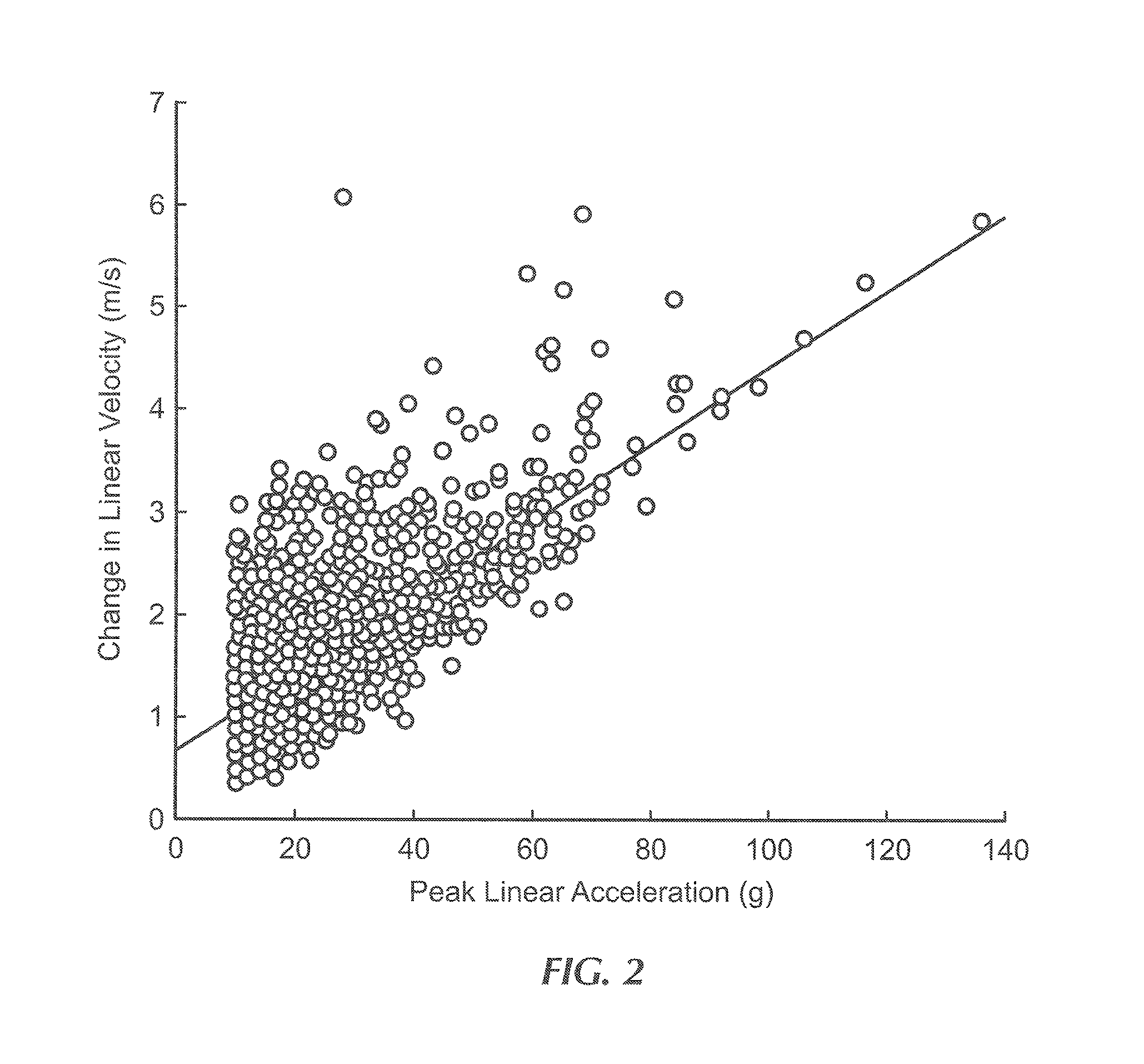Despite the “mild” descriptor, concussions are serious injuries and their effect if more than one is experienced by a player become cumulative and may lead to
chronic traumatic encephalopathy, or CTE, with reduced
brain function in later life.
The problem today has become nearly epidemic—with an estimated 300,000 football concussions a year among youth, high school, college, and NFL players.
Moreover, due to players concealing their injuries and coaches and trainers failing to detect them, many experts believe that number could be low by a factor of two.
However, none of these
metrics has yet been shown to be significantly more successful at predicting a
concussion than the combination of the maximum
linear acceleration value and the maximum
angular acceleration value, where the current NFL threshold value being used for the former is 79 Gs, and the current NFL threshold value being used for the latter is 5,757 radians / second.
Despite recent helmet improvements (mostly better
cushioning in the liner area to better reduce head acceleration levels), concussions seem to continue unabated, so the various helmet improvements have not significantly helped to reduce the number of occurrences.
One likely reason for the lack of success in reducing concussions is that the helmet improvements made so far have mostly concentrated on the
linear acceleration issue, and have mostly or completely ignored the
angular acceleration issue.
The lack of real reductions in concussions may be the result of a simple misconception about what goes on inside the head to cause a
concussion.
So, contrary to current thinking, high
linear acceleration, or deceleration, does not provide the entire picture, and one needs to look further, particularly at the
angular acceleration of the head.
But angular acceleration is not part of that simplified picture of what happens to the brain in a
concussion, so it tends to get ignored.
And yet, unlike with linear acceleration, the
cerebrospinal fluid is not as effective in eliminating damaging internal impacts of the brain against the inside of the
skull in response to an abrupt high angular acceleration of the head.
But the current helmet designs do little or nothing to limit the second contributor to angular acceleration, which is the rotational motion of the head at the top of the neck.
However, in other studies, players who experienced lower values than the NFL threshold values did sustain concussions.
Clearly, the situation is far more complex than just the levels of peak acceleration.
This apparent dichotomy with respect to the role of peak linear acceleration has likely led to the
confusion that's existed among current researchers trying to determine the significance of peak linear and angular accelerations in concussions.
If the neck were so rigid that the head could not move at all with respect to the massive body, it would be unlikely that any football player could receive enough linear or angular acceleration to cause a concussion.
When talking about the brain, however, the brain is not exactly neutrally buoyant in the surrounding
cerebrospinal fluid.
In light of the above analysis, however, that seems to no longer be the case, even for a head deceleration level more than two times what the NFL considers to be the linear acceleration / deceleration threshold level for concussions (79 Gs).
From the standpoint of identifying better helmet protection, identifying a necessary condition is paramount, but from the standpoint of identifying a predictive metric, the necessary condition is not enough.
So angular acceleration is a poor predictor.
Some researchers, who did not appreciate the fact that what they were recording was the brain's protective mechanism against linear acceleration, have conjectured that perhaps the rapid
pressure increase is the damaging mechanism.
However, because the cranium and the brain are not spherical, but instead semi-ovoid and oblong, at the oblong extremities an angular acceleration can resemble a transverse linear acceleration and as a result the CSF can experience quasi-linear acceleration induced pressure gradients at the oblong extremities which tend to gently (over a wide surface area) rotate the near neutrally buoyant brain along with the cranium, and so the CSF is still partially protective against angular acceleration induced internal impacts, just not nearly as effectively as for pure linear accelerations.
In a concussion the cranium pushes on the surface of the brain at just a few points which then bear the brunt of having to push the entire jello-like brain
mass around to try to follow the sudden cranial motion, and so these points experience the most localized strain and shearing and may suffer the previously cited coup and contrecoup injuries.
Strain levels (and
high strain rates) of more than 10% are considered to be almost always damaging.
But current helmet liners are not designed to reduce the rotational acceleration of the head that arises from the rotational acceleration of the helmet shell, and this rotational acceleration (from both of the above discussed studies) contributes directly to the total angular acceleration level of the head.
Looking at the shiny, round, hard plastic surface of a football helmet it may be hard to imagine how a helmet shell can even acquire a large rotational acceleration in a helmet-to-helmet collision.
Events occurring within ten milliseconds may be too fast to be seen by the
human eye.
However, that is not too fast for some of the 18 ft / sec differential tangential velocity in the above non-centric impact example to be picked up by both helmet shells.
Also for impacts that are near 0 degrees off-center (a near normal impact) the normal speed and force components may be very high and the dimpled-in time may be also high, but the relative tangential speed is very low by comparison so the tangential speed that can be taken on is limited.
 Login to View More
Login to View More  Login to View More
Login to View More 


